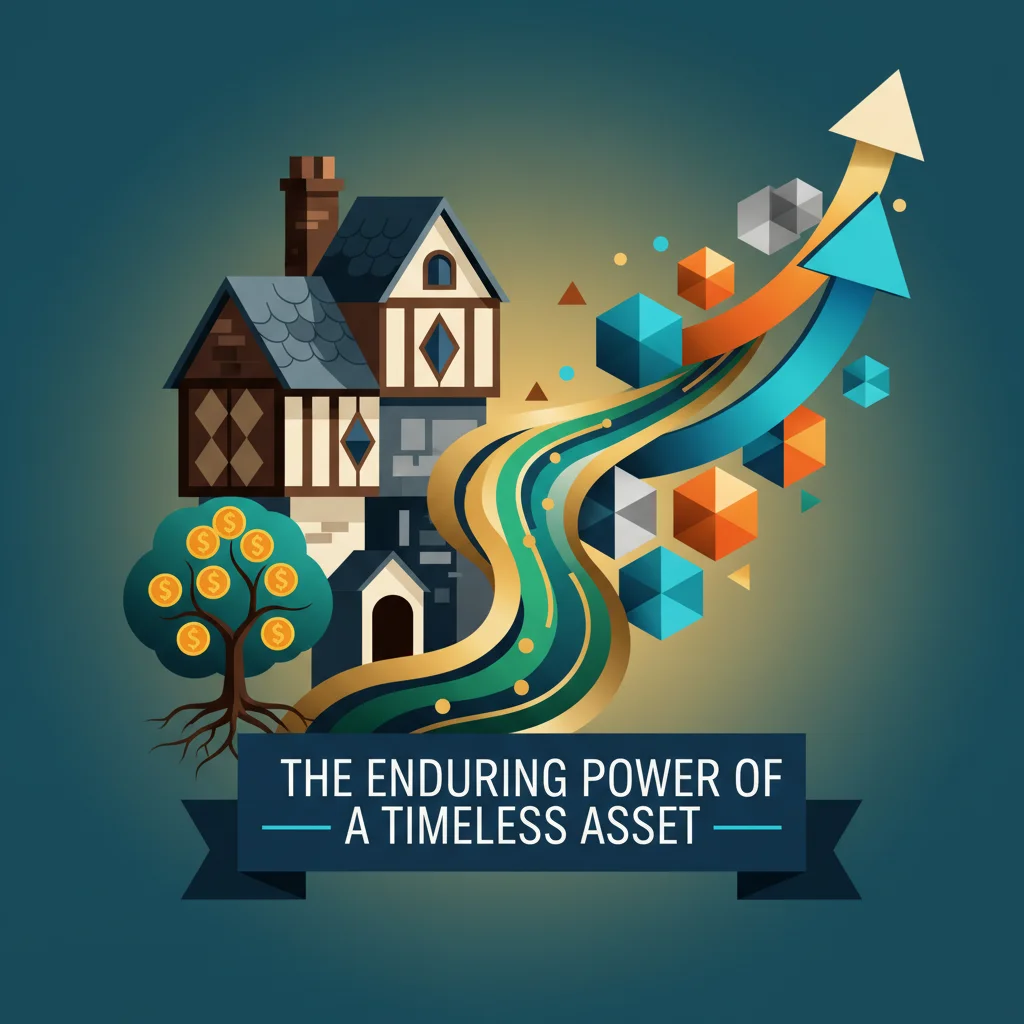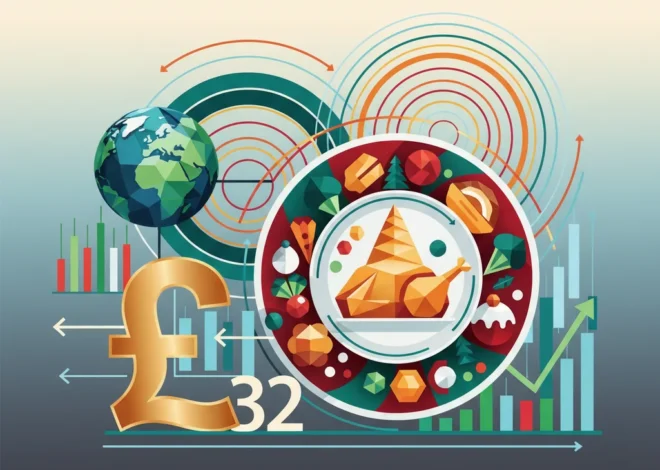
The 500-Year Portfolio: What a Tudor Mansion Teaches Us About Modern Investing
The Enduring Power of a Timeless Asset
Imagine an asset so robust it has not only weathered but thrived through half a millennium of economic cycles, political upheavals, and technological revolutions. An asset that hosted Queen Elizabeth I on one of her royal progresses and today stands as a masterclass in modern design. This isn’t a hypothetical instrument from a complex financial model; it’s a real, tangible 500-year-old house, a silent witness to five centuries of history, recently and thoughtfully modernized by the celebrated designer Ilse Crawford.
While on the surface this is a story of architecture and heritage, for those in the world of finance and investing, it offers profound lessons. In an era dominated by high-frequency trading, volatile cryptocurrencies, and the relentless pace of fintech innovation, this ancient structure provides a powerful framework for understanding true, long-term value. It forces us to ask a critical question: What can a 16th-century mansion teach us about building a resilient 21st-century portfolio and navigating the modern economy?
The answer lies not in its timber frames or Tudor brickwork, but in the principles it embodies: longevity, the strategic integration of innovation, the power of narrative, and the immutable economics of scarcity. This is more than a home; it’s a physical manifestation of a blue-chip investment strategy.
A Masterclass in Low-Volatility, High-Value Investing
In the world of modern finance, investors are often obsessed with quarterly returns and the daily fluctuations of the stock market. We build complex algorithms to predict micro-trends and celebrate the disruptive power of new technologies. Yet, this Tudor home represents an entirely different class of asset—one built not for rapid growth, but for unparalleled endurance. For 500 years, it has served as a store of value, quietly appreciating while empires rose and fell.
This type of “trophy asset” provides a crucial lesson in portfolio diversification. While liquid assets like stocks and bonds are essential for growth and flexibility, illiquid, tangible assets with deep historical significance offer a unique form of stability. Their value is less correlated with the public markets and more tied to fundamental principles of scarcity, location, and cultural significance. This property has outlasted the South Sea Bubble, the Great Depression, and the 2008 financial crisis. Its continued existence is a testament to the idea that true wealth is often built over generations, not fiscal quarters.
The very concept of a property that once hosted royalty like Elizabeth I introduces an intangible value that cannot be captured by standard valuation models. This “narrative premium” is a powerful economic force, akin to the brand equity of a company like Apple or the cultural cachet of a rare work of art. It creates a moat around the asset, insulating it from market whims and ensuring its desirability across centuries.
Beyond the Rainbow: A Financial Post-Mortem of Manchester Pride's Collapse
Modernizing a Legacy: A Metaphor for the Fintech Revolution
Perhaps the most compelling chapter in this property’s recent history is its modernization by designer Ilse Crawford. The project was not about erasing the past but about making it relevant for the present. The goal was to preserve the soul of the 500-year-old structure while equipping it with the functionality and comfort of modern life. This delicate balancing act is a perfect metaphor for the transformation currently sweeping the banking and finance industries.
Traditional banking institutions are, in many ways, like this Tudor mansion. They are built on centuries-old foundations of trust, regulation, and established processes. They are durable and possess immense institutional gravity. However, without modernization, they risk becoming obsolete relics. This is where financial technology, or fintech, plays the role of the thoughtful designer. Fintech startups are not necessarily trying to demolish the entire financial system; rather, they are building new, efficient, and user-friendly interfaces on top of the existing infrastructure.
Think of it this way: the core “load-bearing walls” of the financial system—regulatory compliance, central banking, and core ledgers—remain. But the “interior” is being completely reimagined. Mobile banking apps are the new, modern kitchens. Automated investment platforms are the smart home systems. The work of innovators in financial technology is to respect the integrity of the original structure while making it more accessible, efficient, and pleasant to inhabit for the modern consumer. Just as Ilse Crawford brought contemporary relevance to a historic space (source), fintech is breathing new life into the venerable halls of finance.
Comparing Asset Classes: A Look at Stability vs. Growth
To put the unique nature of a heritage asset into perspective, consider how it stacks up against more conventional investments. The following table provides a conceptual comparison, highlighting the trade-offs between different asset classes that every investor must navigate.
| Asset Class | Primary Value Driver | Typical Volatility | Liquidity | Long-Term Stability |
|---|---|---|---|---|
| Heritage Real Estate | Scarcity, Provenance, Location | Very Low | Very Low | Very High |
| Stock Market (S&P 500) | Corporate Earnings, Economic Growth | Medium-High | High | Medium-High |
| Government Bonds | Interest Rates, Sovereign Credit | Low | High | High |
| Cryptocurrency (e.g., Bitcoin) | Network Adoption, Scarcity | Very High | Medium | Unproven |
As the table illustrates, there is no single “best” asset. A balanced portfolio, much like a well-designed home, incorporates different elements for different purposes—some for growth and flexibility, others for stability and a foundation that will last for centuries.
The New Global Trade Playbook: Why Regional Deals Are Reshaping Markets and Investments
The Future of Provenance: Securing Legacy with Blockchain
One of the most critical components of this property’s value is its story—its provenance. Knowing that a monarch once walked its halls is a priceless piece of information. For centuries, such histories have been preserved through paper deeds, historical records, and oral tradition—all susceptible to loss, forgery, and decay. This is where one of the most forward-looking technologies, blockchain, offers a revolutionary solution.
At its core, blockchain is a decentralized, immutable ledger. It’s a technology designed to record and verify information in a way that is permanent and tamper-proof. Imagine creating a digital “twin” for this Tudor mansion on a blockchain. Every significant event in its history could be recorded as a permanent block in the chain:
- 1520s: Original construction recorded, with architectural plans and materials cryptographically signed by the master builder’s guild.
- 1570s: Royal visit by Elizabeth I recorded, perhaps verified by a digital token from the Royal Archives.
- 1950s: Attainment of historical listed status, with the government decree added to the chain.
- 2020s: Renovation by Ilse Crawford, with every blueprint, permit, and material logged immutably.
This application of blockchain technology moves beyond simple cryptocurrency trading and into the realm of securing real-world value. It provides an unbreakable chain of custody and a perfect, verifiable history, ensuring that the asset’s narrative—its most powerful value driver—is preserved for the next 500 years. This fusion of ancient heritage and cutting-edge financial technology represents the future of how we manage and transfer high-value assets.
A New Economic Dawn? Unpacking the US-China Trade Deal and Its Impact on Global Markets
Conclusion: Timeless Principles for a Modern Economy
A 500-year-old house, updated for the modern age, is far more than a piece of luxury real estate. It is a tangible thesis on investing. It teaches us to look beyond the noise of the daily markets and appreciate the profound power of longevity. It shows us that innovation and tradition are not opposing forces but complementary partners in creating enduring value. It reminds us that behind every great asset is a compelling story, a principle as true for a company on the stock market as it is for a home graced by a queen.
As we navigate a complex global economy being reshaped by fintech, AI, and decentralization, the lessons from this quiet corner of history are more relevant than ever. By embracing a long-term perspective, balancing stability with innovation, and understanding the deep economics of narrative and scarcity, we can build portfolios and businesses that are not just profitable in the short term, but are built to last for generations to come.


